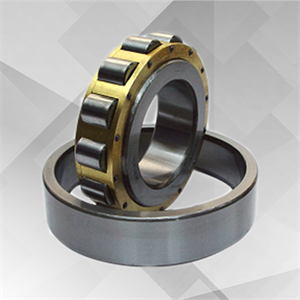Product FAQ
Installation process of radial thrust ball bearings
Radial thrust ball bearings are precision parts, so they require considerable caution when using them. Even if high-performance bearings are used, if used improperly, the expected performance results will not be achieved, and the bearings will be easily damaged. Therefore, when using bearings, you should pay attention to the following matters: However, under certain special operating conditions, radial thrust ball bearings can obtain a longer life than conventional calculations, especially under light loads. These special operating conditions are when the rolling surfaces (rails and rolling elements) are effectively separated by a lubricant film and limit possible surface damage caused by contaminants. In fact, under ideal conditions, so-called permanent bearing life is possible. Grease lubrication includes the sealing method of filling the sealed bearing with grease in advance, and the filling and grease supply method of filling an appropriate amount of grease inside the casing and replenishing or replacing it at regular intervals. In addition, for machinery with multiple radial thrust ball bearings that need lubrication, a centralized grease supply method with pipelines connected to each lubrication point is used. Grease lubrication can be filled with grease once without the need to replenish it for a long time, and the structure of its sealing device is relatively simple, so it is widely used. Oil lubrication is relatively simple. The installation and disassembly methods of radial thrust ball bearings should be determined according to the structure, size and matching properties of the bearing components. The pressure of installation and disassembly should be directly applied to the end face of the tightly fitting retaining ring, and the pressure cannot be transmitted through the rolling elements, because this will cause indentations on the working surface of the bearing, affect the normal operation of the bearing, and even cause damage to the bearing. The cage, sealing ring, dust cover and other parts of the bearing are easily deformed, and the pressure of installing or disassembling the bearing cannot be added to these parts. (1) The inner ring of the bearing has a tight fit with the shaft, and the outer ring has a loose fit with the shell. You can use a press to press the bearing on the bearing first, and then install the shaft and the bearing into the shell. During press fit, The end face of the radial thrust ball bearing is padded with an assembly sleeve of soft metal material (copper or soft steel pipe). The inner diameter of the assembly sleeve should be slightly larger than the journal diameter, and the outer diameter should be smaller than the flange diameter of the bearing inner diameter to avoid pressing on the cage. When installing bearings in large quantities, a handle can be added to the casing. When installing radial thrust ball bearings, the centerline of the bearing hole and the shaft must coincide. Bearings that are skewed relative to the shaft are not only difficult to install, but can also cause indentations, journal bending, and even fracture of the bearing inner ring. Where a press is missing or cannot be used, the bearing can be installed with an assembly sleeve and a small hammer. The hammering force should be evenly transmitted to the entire circumference of the end face of the bearing ring, so the hammered end face of the assembly sleeve should be made into a spherical shape. (2) The outer ring of the bearing has a tight fit with the housing hole, and the inner ring has a loose fit with the shaft. The bearing can be pressed into the housing first. At this time, the outer diameter of the assembly sleeve should be slightly smaller than the diameter of the housing hole. (3) The inner ring of the bearing and the shaft, and the outer ring and the shell hole are all tightly matched. The end face of the assembly sleeve should be made into a ring that can press the end face of the inner and outer rings of the bearing at the same time, or use a disc and the assembly sleeve to make it The pressure is transmitted to the inner and outer rings at the same time, pressing the bearing into the shaft and housing. This installation method is particularly suitable for the installation of self-aligning radial spherical bearings. (4) Heating installation. The force required to install a radial thrust ball bearing is related to the size of the bearing and the size of the fit interference. For medium and large bearings with large interference, the hot installation method is commonly used. Before hot installation, put the bearing or separable bearing ring into the oil tank or special heater and heat it evenly to 80~100℃ (should not exceed 100℃). Hot loading of bearings requires skilled operating skills. When the bearing is taken out from the heating oil tank or heater, the oil stains and attachments on the bearing surface should be wiped off immediately with a clean cloth (not cotton yarn), and then placed in front of the mating surface, and the bearing should be pushed in one operation. to the position against the shaft shoulder. The bearing should always be pushed tight during the cooling process, or the bearing should be tapped with a small hammer through the assembly sleeve to make it close. The bearing should be rotated slightly during installation to prevent the installation from being tilted or stuck. When the outer ring of the radial thrust ball bearing and the shell hole are tightly matched, the shell can also be heated and installed into the bearing. Especially when the bearing seat made of light metal is tightly fitted, its mating surface may be damaged due to the pressing of the bearing outer ring. In this case, the bearing seat should be heated.

Categories
News
Contact Us
Contact: Luoyang Hongyuan Bearing Technology Co.,Ltd
Phone: 13653797636
Tel: 400-037-9586
E-mail: lyhyzc7@gmail.com
Add: Chuangye road, Konggang Industrial cluster district,Luoyang city, Henan province, China